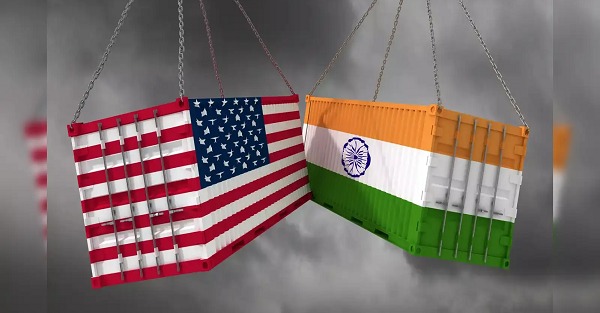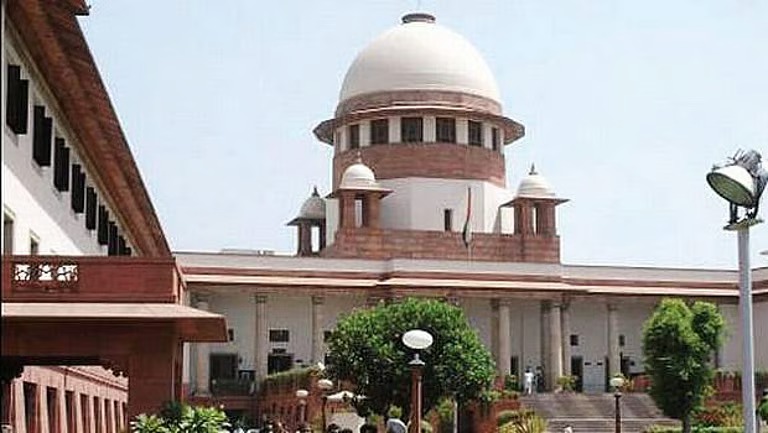V.V. Kamat, J.@mdashAt the instance of the Revenue, the following three questions await our answer :
"1. Whether, on the facts and in the circumstances of the case, --
(i) the assessee is entitled to invoke Rule 27 of the Income Tax (Appellate Tribunal) Rules, 1963, and the Tribunal is empowered to consider the contention of the assessee under the rule ?
2. Whether, on the facts and in the circumstances of the case and the imported new system being an exclusive property of the assessee and factually and scientifically the plant being new and of an enduring nature, the expenditure for the same is revenue in character ?
3. Whether, on the facts and in the circumstances of the case, the Tribunal is right in law and fact in holding, --
(i) the expenditure incurred by the assessee in acquiring designs and drawings is not in the capital field ?
(ii) the expenditure is of revenue nature ? "
On reading the questions and after hearing learned senior standing counsel for taxes as well as learned counsel for the assessee, we find that question No. 2 is an unnecessary facet of question No. 3 and learned counsel agreed on that and submitted that we need answer only questions Nos. 1 and 3.
2. The first question relates to the exercise of powers by the Income Tax (Appellate Tribunal) Rules, 1963. This was with regard to an aspect decided against the assessee and seeking to support the order of the first appellate authority on submissions in regard thereto. We had an occasion to consider this aspect when we decided Income Tax Reference No. 2 of 1992 --
3. The assessee is a manufacturer of electronic equipment. The assessment year is 1979-80 and in regard to which the assessee claimed deduction. The deduction was of the amount of Rs. 5 lakhs paid to RFL International Inc., USA, towards the acquisition of designs and drawings for the manufacture of power line carrying communication equipment. It was contended that u/s 37 of the Income Tax Act, 1961, it would be an allowable deduction as a revenue expenditure.
4. In the order dated September 21, 1982, the Income Tax Officer considered the situation in the following manner :
" In the assessee''s case the outright purchase of designs and drawings has secured to the assessee the advantage or benefit of an enduring nature notwithstanding the transient nature of the advantage. No concrete evidence regarding the transient nature of this equipment has been brought forward except extracts from the report of the electronics committee which was constituted by the Government of India on February 15, 1966. This report does not relate to the particular equipment. It is a report giving recommendations as to the steps India should take to make its own contribution to the rapid advance of electronics. In dealing with the subject, the committee made out a case for providing technological progress for building up a diverse and sophisticated electronic industry. Admittedly, electronics is a rapidly developing industry and as compared to other mechanical industries it can be stated that obsolescence is faster in electronics than in other industries. But it cannot be accepted that just because an equipment becomes obsolete quicker, the purchase of every electronic equipment would, therefore, be only revenue expenditure."
It would be seen that even the Income Tax Officer was not prepared to consider it as revenue expenditure, the basic factual peculiarity was not even disputed by him. The said peculiarity as found from the above observations relate to electronics as a rapidly developing industry and as compared to other mechanical industries, in regard thereto obsolescence is faster in electronics than in other industries. In spite of this position, the contention of the assessee was rejected.
5. The first appellate authority -- the Commissioner of Income Tax (Appeals), Calicut, has also endorsed these factual peculiarities and aspect relating to the field of electronics. To be precise the observations of the first appellate authority are to the following effect :
" I do agree that electronics is a field where rapid changes are taking place. That does not, however, mean that any expenditure incurred in this line of business should be revenue expenditure. The appellant has imported a new system or a substantial part of a new system represented by designs and adapted to suit the Indian conditions and in that process a number of subsidiary modules were developed and added to the imported module and with that a perfect new system was brought into existence. That the system had to be given up as being outmoded within a couple of years is not of much relevance at the point of purchase or import of the new system. At that point, there was no question of anyone entertaining a firm belief that the system would be discarded so soon. In that case, the system would not have been purchased at all for a substantial price of Rs. 5 lakhs. "
Thereafter, the first appellate authority has considered the decision cited. However, considering the question with regard to the position as to whether the said question could be of revenue character or not, which was the specific contention of the assessee, the first appellate authority held that it can still be allowed as an expenditure u/s 35 of the Income Tax Act. It would be more than appropriate to reproduce the reasoning in the context and it is as follows ;
" In my view, the asset purchased by the appellant from RF International Inc., USA, in the shape of designs and drawings is a capital asset. In the normal course, it cannot be allowed as a deductible expenditure. However, in the appellant''s case, it can still be allowed as an expenditure coming u/s 35 of the Income Tax Act. With the import of the 6 modules of the new system, the appellant can be considered to have purchased time for its own scientific research or incurred a capital expenditure for that purpose. That the imported asset could not be used as such and had to be considerably modified and adapted to suit the Indian conditions by adding 35 modules developed at the appellant''s own factory or research wing would show that it was a capital expenditure incurred for the purpose of research and development. In my view, such an expenditure though capital in nature can be allowed as a straight deduction u/s 35. I would, therefore, allow the claim for deducting Rs. 5 lakhs as an admissible expenditure for the year under account."
The first appellate authority granted deduction, in this way, u/s 35 of the Act by the order dated December 16, 1985.
6. Since the assessee contended with regard to his claim for deduction on the basis that the expenditure is of revenue character, as stated at the outset the assessee supported the favourable order of the first appellate authority which was under challenge, to contend that the expenditure incurred was of a revenue character. We have already answered the situation that this could be the legal way of the assessee who was the respondent to support the order even though he had not appealed because the ultimate decision was in his favour granting deduction u/s 35 of the Income Tax Act, 1961.
7. On behalf of the assessee contending that the claim before the Assessing Officer was that the amount on acquiring the know-how was of revenue in character, the following submission was made :
" In the field of electronics rapid changes take place due to fast technological developments and new inventions or systems become obsolete in short durations. As a matter of fact, the system introduced by the assessee with its own research facilities has itself undergone further changes over a period of three years, Therefore, no advantage of an enduring nature had come into existence."
The Tribunal after hearing the rival submissions has recorded the following findings of fact :
" Having regard to the fact that the assessee is engaged in the field of manufacturing certain equipment in the sphere of electronics and is found to have changed its technology very frequently we have no hesitation in holding that the expenditure incurred by the assessee on acquiring designs and drawings from RFL Inc, USA, is undoubtedly for improving its efficiency or its profit earning apparatus, the advantage, if any, is not of a permanent degree but shortlived in view of further vast developments in technology and at any rate, the advantage is not in the capital field."
In reaching the above fact-finding, right from paragraph 8 of the impugned order the Tribunal has referred in great and minute detail to the factual peculiarities. We feel it unnecessary to reproduce them in the interest of the burden of this judgment.
8. The Tribunal has relied on the decision of the apex court in Alembic Chemical Works Co. Ltd. v. CIT : [1989]177ITR377(SC) . The apex court reviewed a catena of decisions rendered on the nature of an expenditure whether to be of capital or of revenue character. The following paragraph from the decision of the apex court is found quoted by the Tribunal as a caution (headnote) :
" The rapid strides in science and technology in the field should make us a little slow and circumspect in too readily pigeon-holing an outlay, such as this, as capital. . . The idea of ''once for all'' payment and ''enduring benefit'' are not to be treated as something akin to statutory conditions ; nor are the notions of ''capital'' or ''revenue'' a judicial fetish. What is capital expenditure and what is revenue are not eternal verities but must needs be flexible so as to respond to the changing economic realities of business. The expression ''asset or advantage of an enduring nature'' was evolved to emphasise the element of a sufficient degree of durability appropriate to the context. There is also no single definitive criterion which, by itself, is determinative whether a particular outlay is capital or revenue. The ''once for all'' payment test is also inconclusive. What is relevant is the purpose of the outlay and its intended object and effect, considered in a commonsense way having regard to the business realities. In a given case, the test of ''enduring benefit'' might break down."
The above paragraph would show that the question gets clinged to the factual peculiarities and all kinds of decisions and approaches go to help to determine the consequence of the factual peculiarities.
9. We have already pointed out the above factual peculiarities floating on the surface of the decisions of the above authorities. We would like to add that left to ourselves we would not have also been able to reach any conclusion other than the one reached by the Tribunal, that the assessee acquired designs and drawings for improving its efficiency or its profit earning apparatus and the consequent advantages are not of a permanent degree but short-lived in view of further vast and rapid developments in the field of technology. Therefore, the decision of the Tribunal requires to be endorsed.
10. For all the above reasons question No. 1 is answered in the affirmative, against the Revenue and in favour of the assessee. Similarly, question No. 3 also gets answered in the affirmative, against the Revenue and in favour of the assessee.
11. A copy of the judgment under the seal of this court and the signature of the Registrar shall be forwarded to the Income Tax Appellate Tribunal, Cochin Bench, as required by law.

